The solar PV inverters market is expected to grow from US$ 8.5 billion in 2022 to US$ 20.1 billion by 2032, at a CAGR of 9% during the forecast period 2023-2032.
Solar inverters are receiving new and enhanced features. This helps end customers satisfy the increasing demand for electricity. The installation of a solar (PV) inverter in a hot climate is deemed significant and advantageous. As a result, over the forecast period, the global solar (PV) inverter market is expected to grow and develop. String solar (PV) inverters are widely utilized in all industries since they are efficient and have low failure rates when operating and maintaining large constructions. The usage of a solar (PV) inverter is feasible in nature due to the availability of adequate power.
Energy demand has been increasing year after year, pushing the demand for various renewables such as solar energy and equipment. Since the drop in petrol costs in 2014, alternative energy, particularly wind, and solar, has taken a back seat, and the trend has echoed across several businesses. In 2022, the United States will be the largest market in North America. It is a sizable market for various types of PV inverters. Though string inverters have seen continuous growth in the United States, central inverters are expected to preserve their market share. Solar PV inverters are an essential component of a bigger solar system. Solar PV inverters have diverse characteristics and features that take into consideration various aspects influencing solar system production.
This study delivers a comprehensive analysis of the product type, end-user, and region. The product type segment includes string inverter, central inverter, and micro inverter. The string inverter segment holds the largest market share in 2022. These inverters are very reliable with timely maintenance and adaptable enough to be installed in a secure location. The end-user segment includes utilities, residential, and commercial & industrial. The residential segment held the largest market share in 2022. The residential end-user market has grown as a result of rising customer demand for solar renewable energy for electrification. Governments in different nations have actively promoted captive power generation from renewable sources, such as power in residential buildings, through legislation and financial incentives.
The market has been divided into North America, Europe, Asia-Pacific, Middle East & Africa, and South America. North America holds the largest market share, with the United States being the primary contributor to market growth. The United States is a significant market for various types of PV inverters. Recent inverter trends in the country include the dominance of 60 kW or greater three-phase string inverters and 1.5 MW or more central inverters.
Some of the notable players in the market are Omron Corporation, Siemens AG, ABB Ltd, Mitsubishi Electric Corporation, Hitachi Hi-Rel Power Electronics Pvt. Ltd, Schneider Electric SE, SMA Solar Technology AG, Delta Electronics Inc., SunPower, Power Electronics S.L., and Others.
Report Description:
1. Introduction
1.1. Objectives of the Study
1.2. Market Definition
1.3. Research Scope
1.4. Currency
1.5. Key Target Audience
2. Research Methodology and Assumptions
3. Executive Summary
4. Premium Insights
4.1. Porter’s Five Forces Analysis
4.2. Value Chain Analysis
4.3. Top Investment Pockets
4.3.1. Market Attractiveness Analysis by Product Type
4.3.2. Market Attractiveness Analysis by End-User
4.3.3. Market Attractiveness Analysis by Region
4.4. Industry Trends
5. Market Dynamics
5.1. Market Evaluation
5.2. Drivers
5.2.1. Rising usage of energy
5.3. Restraints
5.3.1. High cost
5.4. Opportunities
5.4.1. Rising R&D
5.5. Challenges
5.5.1. Lack of skilled workers
6. Global Solar PV Inverters Market Analysis and Forecast, By Product Type
6.1. Segment Overview
6.2. String Inverter
6.3. Central Inverter
6.4. Micro Inverter
7. Global Solar PV Inverters Market Analysis and Forecast, By End-User
7.1. Segment Overview
7.2. Utilities
7.3. Residential
7.4. Commercial & Industrial
8. Global Solar PV Inverters Market Analysis and Forecast, By Regional Analysis
8.1. Segment Overview
8.2. North America
8.2.1. U.S.
8.2.2. Canada
8.2.3. Mexico
8.3. Europe
8.3.1. Germany
8.3.2. France
8.3.3. U.K.
8.3.4. Italy
8.3.5. Spain
8.4. Asia-Pacific
8.4.1. Japan
8.4.2. China
8.4.3. India
8.5. South America
8.5.1. Brazil
8.6. Middle East and Africa
8.6.1. UAE
8.6.2. South Africa
9. Global Solar PV Inverters Market-Competitive Landscape
9.1. Overview
9.2. Market Share of Key Players in Global Solar PV Inverters Market
9.2.1. Global Company Market Share
9.2.2. North America Company Market Share
9.2.3. Europe Company Market Share
9.2.4. APAC Company Market Share
9.3. Competitive Situations and Trends
9.3.1. Product Launches and Developments
9.3.2. Partnerships, Collaborations, and Agreements
9.3.3. Mergers & Acquisitions
9.3.4. Expansions
10. Company Profiles
10.1. Omron Corporation
10.1.1. Business Overview
10.1.2. Company Snapshot
10.1.3. Company Market Share Analysis
10.1.4. Company Product Portfolio
10.1.5. Recent Developments
10.1.6. SWOT Analysis
10.2. Siemens AG
10.2.1. Business Overview
10.2.2. Company Snapshot
10.2.3. Company Market Share Analysis
10.2.4. Company Product Portfolio
10.2.5. Recent Developments
10.2.6. SWOT Analysis
10.3. ABB Ltd
10.3.1. Business Overview
10.3.2. Company Snapshot
10.3.3. Company Market Share Analysis
10.3.4. Company Product Portfolio
10.3.5. Recent Developments
10.3.6. SWOT Analysis
10.4. Mitsubishi Electric Corporation
10.4.1. Business Overview
10.4.2. Company Snapshot
10.4.3. Company Market Share Analysis
10.4.4. Company Product Portfolio
10.4.5. Recent Developments
10.4.6. SWOT Analysis
10.5. Hitachi Hi-Rel Power Electronics Pvt. Ltd
10.5.1. Business Overview
10.5.2. Company Snapshot
10.5.3. Company Market Share Analysis
10.5.4. Company Product Portfolio
10.5.5. Recent Developments
10.5.6. SWOT Analysis
10.6. Schneider Electric SE
10.6.1. Business Overview
10.6.2. Company Snapshot
10.6.3. Company Market Share Analysis
10.6.4. Company Product Portfolio
10.6.5. Recent Developments
10.6.6. SWOT Analysis
10.7. SMA Solar Technology AG
10.7.1. Business Overview
10.7.2. Company Snapshot
10.7.3. Company Market Share Analysis
10.7.4. Company Product Portfolio
10.7.5. Recent Developments
10.7.6. SWOT Analysis
10.8. Delta Electronics Inc.
10.8.1. Business Overview
10.8.2. Company Snapshot
10.8.3. Company Market Share Analysis
10.8.4. Company Product Portfolio
10.8.5. Recent Developments
10.8.6. SWOT Analysis
10.9. SunPower
10.9.1. Business Overview
10.9.2. Company Snapshot
10.9.3. Company Market Share Analysis
10.9.4. Company Product Portfolio
10.9.5. Recent Developments
10.9.6. SWOT Analysis
10.10. Power Electronics S.L.
10.10.1. Business Overview
10.10.2. Company Snapshot
10.10.3. Company Market Share Analysis
10.10.4. Company Product Portfolio
10.10.5. Recent Developments
10.10.6. SWOT Analysis
List of Table
1. Global Solar PV Inverters Market, By Product Type, 2019-2032 (USD Billion)
2. Global String Inverter, Solar PV Inverters Market, By Region, 2019-2032 (USD Billion)
3. Global Central Inverter, Solar PV Inverters Market, By Region, 2019-2032 (USD Billion)
4. Global Micro Inverter, Solar PV Inverters Market, By Region, 2019-2032 (USD Billion)
5. Global Solar PV Inverters Market, By End-User, 2019-2032 (USD Billion)
6. Global Utilities, Solar PV Inverters Market, By Region, 2019-2032 (USD Billion)
7. Global Residential, Solar PV Inverters Market, By Region, 2019-2032 (USD Billion)
8. Global Commercial & Industrial, Solar PV Inverters Market, By Region, 2019-2032 (USD Billion)
9. North America Solar PV Inverters Market, By Product Type, 2019-2032 (USD Billion)
10. North America Solar PV Inverters Market, By End-User, 2019-2032 (USD Billion)
11. U.S. Solar PV Inverters Market, By Product Type, 2019-2032 (USD Billion)
12. U.S. Solar PV Inverters Market, By End-User, 2019-2032 (USD Billion)
13. Canada Solar PV Inverters Market, By Product Type, 2019-2032 (USD Billion)
14. Canada Solar PV Inverters Market, By End-User, 2019-2032 (USD Billion)
15. Mexico Solar PV Inverters Market, By Product Type, 2019-2032 (USD Billion)
16. Mexico Solar PV Inverters Market, By End-User, 2019-2032 (USD Billion)
17. Europe Solar PV Inverters Market, By Product Type, 2019-2032 (USD Billion)
18. Europe Solar PV Inverters Market, By End-User, 2019-2032 (USD Billion)
19. Germany Solar PV Inverters Market, By Product Type, 2019-2032 (USD Billion)
20. Germany Solar PV Inverters Market, By End-User, 2019-2032 (USD Billion)
21. France Solar PV Inverters Market, By Product Type, 2019-2032 (USD Billion)
22. France Solar PV Inverters Market, By End-User, 2019-2032 (USD Billion)
23. U.K. Solar PV Inverters Market, By Product Type, 2019-2032 (USD Billion)
24. U.K. Solar PV Inverters Market, By End-User, 2019-2032 (USD Billion)
25. Italy Solar PV Inverters Market, By Product Type, 2019-2032 (USD Billion)
26. Italy Solar PV Inverters Market, By End-User, 2019-2032 (USD Billion)
27. Spain Solar PV Inverters Market, By Product Type, 2019-2032 (USD Billion)
28. Spain Solar PV Inverters Market, By End-User, 2019-2032 (USD Billion)
29. Asia Pacific Solar PV Inverters Market, By Product Type, 2019-2032 (USD Billion)
30. Asia Pacific Solar PV Inverters Market, By End-User, 2019-2032 (USD Billion)
31. Japan Solar PV Inverters Market, By Product Type, 2019-2032 (USD Billion)
32. Japan Solar PV Inverters Market, By End-User, 2019-2032 (USD Billion)
33. China Solar PV Inverters Market, By Product Type, 2019-2032 (USD Billion)
34. China Solar PV Inverters Market, By End-User, 2019-2032 (USD Billion)
35. India Solar PV Inverters Market, By Product Type, 2019-2032 (USD Billion)
36. India Solar PV Inverters Market, By End-User, 2019-2032 (USD Billion)
37. South America Solar PV Inverters Market, By Product Type, 2019-2032 (USD Billion)
38. South America Solar PV Inverters Market, By End-User, 2019-2032 (USD Billion)
39. Brazil Solar PV Inverters Market, By Product Type, 2019-2032 (USD Billion)
40. Brazil Solar PV Inverters Market, By End-User, 2019-2032 (USD Billion)
41. Middle East and Africa Solar PV Inverters Market, By Product Type, 2019-2032 (USD Billion)
42. Middle East and Africa Solar PV Inverters Market, By End-User, 2019-2032 (USD Billion)
43. UAE Solar PV Inverters Market, By Product Type, 2019-2032 (USD Billion)
44. UAE Solar PV Inverters Market, By End-User, 2019-2032 (USD Billion)
45. South Africa Solar PV Inverters Market, By Product Type, 2019-2032 (USD Billion)
46. South Africa Solar PV Inverters Market, By End-User, 2019-2032 (USD Billion)
List of Figures
1. Global Solar PV Inverters Market Segmentation
2. Global Solar PV Inverters Market: Research Methodology
3. Market Size Estimation Methodology: Bottom-Up Approach
4. Market Size Estimation Methodology: Top-Down Approach
5. Data Triangulation
6. Porter’s Five Forces Analysis
7. Value Chain Analysis
8. Global Solar PV Inverters Market Attractiveness Analysis by Product Type
9. Global Solar PV Inverters Market Attractiveness Analysis by End-User
10. Global Solar PV Inverters Market Attractiveness Analysis by Region
11. Global Solar PV Inverters Market: Dynamics
12. Global Solar PV Inverters Market Share by Product Type (2023 & 2032)
13. Global Solar PV Inverters Market Share by End-User (2023 & 2032)
14. Global Solar PV Inverters Market Share by Regions (2023 & 2032)
15. Global Solar PV Inverters Market Share by Company (2022)
Market research is a method of gathering, assessing and deducing data & information about a particular market. Market research is very crucial in these days. The techniques analyze about how a product/service can be offered to the market to its end-customers, observe the impact of that product/service based on the past customer experiences, and cater their needs and demands. Owing to the successful business ventures, accurate, relevant and thorough information is the base for all the organizations because market research report/study offers specific market related data & information about the industry growth prospects, perspective of the existing customers, and the overall market scenario prevailed in past, ongoing present and developing future. It allows the stakeholders and investors to determine the probability of a business before committing substantial resources to the venture. Market research helps in solving the marketing issues challenges that a business will most likely face.
Market research is valuable because of the following reasons:
Our research report features both the aspects; qualitative and quantitative. Qualitative part provides insights about the market driving forces, potential opportunities, customer’s demands and requirement which in turn help the companies to come up with new strategies in order to survive in the long run competition. The quantitative segment offers the most credible information related to the industry. Based on the data gathering, we use to derive the market size and estimate their future growth prospects on the basis of global, region and country.
Our market research process involves with the four specific stages.

Data Collection: This stage of the market research process involves with the gathering and collecting of the market/industry related data from the sources. There are basically two types of research methods:
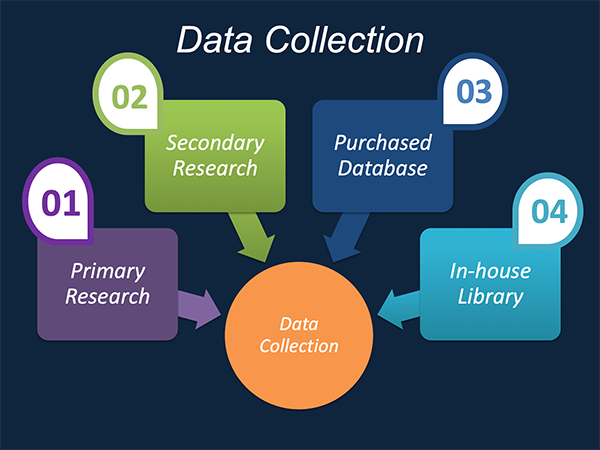
Data Synthesis: This stage includes the evaluation and assessment of all the data acquired from the primary and secondary research. It likewise includes in evaluating the information for any disparity watched while information gathering identified with the market. The data & information is gathered with consideration to the heterogeneity of sources. Scientific and statistical methods are implemented for synthesizing dissimilar information sets and provide the relevant data which is fundamental for formulating strategies. Our organization has broad involvement with information amalgamation where the information goes through different stages:


Market Formulation & Deduction: The last stage includes assigning the data & information in a suitable way in order to derive market size. Analyst reviews and domain based opinions based on holistic approach of market estimation combined with industry investigation additionally features a crucial role in this stage.
This stage includes with the finalization of the market size and numbers that we have gathered from primary and secondary research. With the data & information addition, we ensure that there is no gap in the market information. Market trend analysis is finished by our analysts by utilizing data extrapolation procedures, which give the most ideal figures to the market.
Data Validation: Validation is the most crucial step in the process. Validation & re-validation through scientifically designed technique and process that helps us finalize data-points to be used for final calculations. This stage also involves with the data triangulation process. Data triangulation generally implicates the cross validation and matching the data which has been collected from primary and secondary research methods.





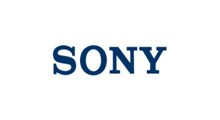

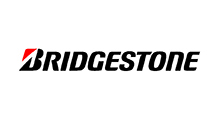

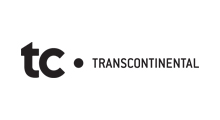















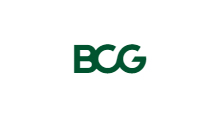


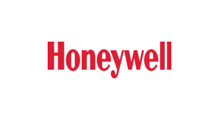

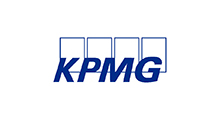
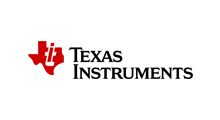



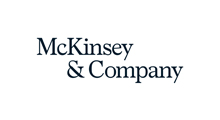

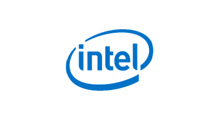







Free Customization
Countries can be added on demand
Free yearly update on purchase of Multi/Corporate User License
Companies served till date

We serve our customers 24x7 for 365 days through calls, emails and live chat options.

Huge database of exceptional market reports bringing market intelligence to your fingertips.

SSL enabled, we offer you various secured payment options for risk free purchase.